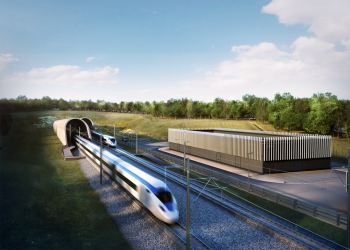While growth has returned to the world economy, the situation remains volatile and certainly much less predictable. As such minds are focused on the need to do more with much less. “ Slash and burn” is no longer the immediate option for organisations, but budgets are still fettered for the private and particularly the public sector. Attention therefore is focused on the continuing search for enduring ways to improve performance with less or minimal resource.
This ongoing drive for value improvement now demands more than the temporary fixes and efficiency savings or departmental reorganisations that we have seen in the past. As Pat Crull Chief Learning Officer of the year at Time Warner Cable said: “in past economic recoveries we always rebuilt our organizations the way we did before – this time is different. We are not going back. We are going to be leaner, quicker and have to do more with less forever onward.”
While “cut-back” may achieve short term cost reduction goals it may also damage the ability of the organisation to operate effectively – reducing standards, staff morale, productivity and corporate confidence. The message is that the relentless search for efficiencies must not jeopardise effectiveness.
Following the thoughts of John McCready, former Head of the UK Government Property Unit, “it is important we build strategies that deal with both the immediate priority of tackling the deficit, whilst safeguarding the interests of future generations.” So to meet the new stringency challenges what is needed are plans that are both sustainable and transformational, a change from traditional to new different and agile, but at the same time producing some early wins.
Many organisations are having to make difficult decisions on service and resources in balancing short and long term budgets – cost bases are inflexible, revenue sources fluctuate, markets and service requirements are changing while price inflation is increasing. In essence there remains unrelenting pressure to do more with less, not as a “one off” but on an ongoing basis. To cope with this there is clearly an underlying and urgent need to be more responsive to rapidly changing situations. Therefore organisations must become agile and adopt a new Agile Agenda.
People are an organisations biggest liability but conversely they are also their greatest asset. Employers are wrestling with the need for agility in the workforce – the need for reductions, outsourcing and doing things differently while trying to retain or attract key talent to maintain services and improve productivity, innovation and business value. Simultaneously many employees remain fearful for the present and the future – certainty of employment, disposable income, and lifestyle in general. In this situation both the organisation and its people are now more receptive to culture change, innovation and implementation of agile working.
Property is the second biggest liability on the balance sheet and while it is clearly a business asset which does give support and value to the organisation, in the current economic climate some property can equally be seen as an increasingly underutilised, inflexible carbon inefficient liability that is a drag on rapidly changing organisational needs and business effectiveness. While the property market may not always be conducive to major disposal activity, there are opportunities for organisations to re-assess and re-focus their space requirements and worksettings to better support their business through developing and implementing agile property strategies.
IT is one of the key enablers for new agile ways of working. Investment in infrastructure capability which is a means of digitally empowering both employee and customer can improve efficiency and customer service as well as being a means of saving through spending. However the lesson for many organisations is to ensure investment in IT capability is similarly matched by development of employee skills and technical abilities to maximise the benefits of the investment.
Much of the Metropolitan Police Service recent IT budget was spent on merely maintaining archaic equipment – some of it dating back to the 1970’s. In response the Met announced a £200m 3 year IT Transformation Plan, that aimed to herald the birth of “agile policing”, with thousands of police officers on the beat equipped with tablet-style mobile devices, as well as greater use of big data tools and cloud services. One of the plans aims is to ensure that 90% of officer transactions are completed via a mobile device which will have an impact equivalent to putting another 900 officers on the beat. Met CIO Richard Thwaite confirmed “such wholesale changes in the way we use technology are extremely challenging but they present fantastic opportunities both to deliver more and save money.”
In the current climate has there ever been a better time to introduce agile working ? A survey of more than 250 facilities managers, conducted by Leesman research for the British Institute of Facilities Management (BIFM), considers the time is right. It revealed that “61% of organisations are actively encouraging remote and flexible working for all staff….and increasing numbers of employers are looking to displace their teams away from expensive corporate environments”.
It would be nice if you could get “agile working in a box”, but every organisation is different and at different levels of capability. Therefore while the agile journey may have similar ingredients the path is likely to be individual for each organisation . However what is clear is that if managed well, introducing agile working can significantly cut fixed and variable costs, reduce environmental impact, improve productivity, resilience and customer focus as well as creating a more satisfied workforce with a better work life balance providing the basis for attracting and retaining key talent.
The holistic benefits are real and significant for those with the leadership vision and capability to progress transformation across their organisation, but for many agile working has until recently remained no more than a “cottage industry” focused on studies, small scale pilots and projects with long gestation periods or just limited to statutory flexible working requirements. Too often management inertia, fear of disturbing the cultural ‘status quo’ and focus on single issues or other political priorities often stall any serious introduction.
The drivers for change are now clearly in place and agile working is a major element in addressing the ongoing the drive for “more with less”. As example the Westminster Sustainable Business Forum report “Leaner and Greener: Delivering Effective Estate Management” confirms that by following identified best practice low cost agile working practices, UK Local Government could reduce the space it occupies by 20-30 per cent, with the potential to deliver savings in running costs of up to £7 billion a year. Similar opportunities exist and are perhaps more urgently needed for competitive advantage in the private sector.
However, as I have written elsewhere agile working is much more than cost saving, or doing the same work in a different time or place. It is about re-focusing the way the organisation operates, getting people to think, manage and work differently to achieve better more effective ways of delivering service, improved performance and achieving desired outcomes.
In the current volatile economic climate surely the case to deploy and sustain agile working is both irresistible and necessary. So what is delaying your commitment? Contact me for further discussion about your plans and opportunities….
Paul Allsopp, The Agile Organisation
Member of the Workplace Change Organisation (WCO).
Article featured as “guest post” on the Public Sector Nomads site – http://publicsectornomads.com














6 Comments